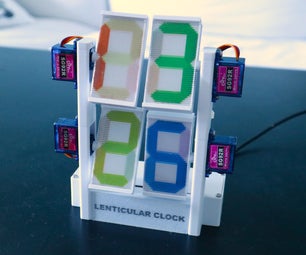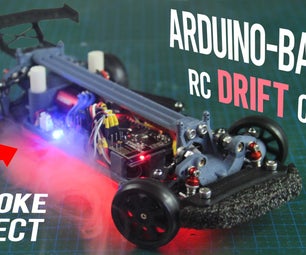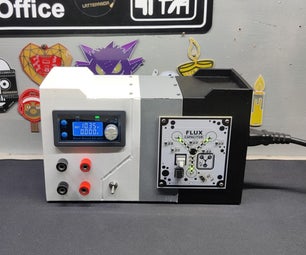Introduction: "Alexa, Turn on the Computer!"
After spending time with an Echo Dot for a few days I wanted to be able to turn on my computer using Alexa(don't ask me why xP).
Watch the Video, you'll get a good idea going into this project.
There is a way to do this without writing a dedicated Alexa app, Alexa supports smart lights out of the box. So if we can emulate a smart bulb interface we can use that to forward commands to other things. I'll be using Node-RED to emulate the smart bulb interface.
One of the obvious ways of doing it is by using Wake-on-LAN feature which can be turned on in the BIOS of your computer. But, I wanted to go the "do it like you see it" way . Hence this happened. I'll be explaining both the ways of doing it in this Instructable.
There are two handy diagrams explaining both the methods!
Things and Parts I used for this project
- Node-RED
- ESP 8266, Wemos D1 Mini Module
- Active High, 3.3v Relay
- Spare cables
- Tools(Sodlering Iron, pliers and the standard ensemble of all electronics hobbyists)
Step 1: Watch the Video and Set-up Node-RED
For either of the methods, you'll need Node-RED running on a server(a Raspberry Pi will be perfect). https://nodered.org/docs/hardware/raspberrypi
You can check the above page for more info on Node-RED. It's a really handy tool with which you can have things up and running in a jiffy.
Install the Alexa and WOL(Wake on LAN) nodes in the palette manager. Also make sure the MQTT module is present for the relay method.
Step 2: Add the Alexa Module/node to the Flow and Configure It
- Add the Alexa node to the flow
- Add the MQTT output node, configure the MQTT server and the topic to publish the MQTT messages.(Relay Method)
- Add the Wake on LAN node. (Wake on LAN method)
- Configure the WOL node with the IP address and MAC Address of your computer.(I recommend having a static IP for your computer).
- Rename the Alexa node to 'Computer', connect the modules as shown in the picture and deploy the flow.
- Ask Alexa to detect devices and Alexa will find the 'computer' node on Node-RED.
Step 3: (WOL Method) Turn on Wake-on-LAN in Your Computer's BIOS Settings
- That's it, just turn on the Wake on LAN feature and you're pretty much done as far as the WOL method goes.
Step 4: Program the Wemos D1 Mini or Any ESP 8266 Module
- Program the ESP module so that it receives the MQTT messages published by Node-RED.
- Program one of the I/O pins to turn on for 200ms every time it receives an 'on' message. Alexa sends 'on' and 'off' as string messages.
- Use that I/O signal to turn on a relay(active-high 3.3v would be best, you'll have to make necessary changes otherwise).
- I made my own 3.3v active high module, because I couldn't buy one.
- You'll need to supply external power for the WiFi and Relay modules
Here's the code I used to program the Wemos D1 Mini.
#include <ESP8266WiFi.h>
#include <PubSubClient.h>
const char *ssid = "xxx"; const char *pass = "xxxxxxxxxxx";
IPAddress server(xx, xxx, xxx, xx);
WiFiClient wclient;
PubSubClient client(wclient, server);
void callback(const MQTT::Publish& pub) {
if(pub.payload_string()== "on"){
digitalWrite(0,HIGH);
delay(200);
digitalWrite(0,LOW);} }
void setup() {
pinMode(0,OUTPUT);
pinMode(2,OUTPUT);
digitalWrite(0,LOW);
Serial.begin(115200);
delay(10);
Serial.println();
Serial.println();
client.set_callback(callback);
wif();
client.connect("arduino000Client");}
void loop() {
if(WiFi.status() != WL_CONNECTED)
wif(); client.subscribe("helluvaTry");}
void wif(){
if (WiFi.status() != WL_CONNECTED) {
Serial.print("Connecting to ");
Serial.print(ssid);
Serial.println("...");
WiFi.begin(ssid, pass); if (WiFi.waitForConnectResult() != WL_CONNECTED)
wif();
Serial.println("WiFi connected");
digitalWrite(2,HIGH);
client.connect("arduino000Client");
}
}Step 5: Make a Splitter Cable for Your Power Button Connector
- Yeah, this is basically wires connected parallely to your power button pins on the motherboard.
- The loose ends in the picture goes into the relay, the female connector goes into the motherboard power pins and the male end connects to the power button connector.
Step 6: That's It
- Test out the configuration and the setup a few times and you're pretty much done.
- Have fun with your voice activated computer(lol).











